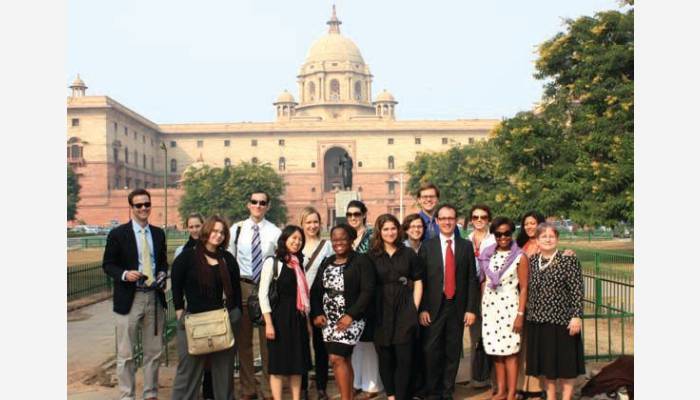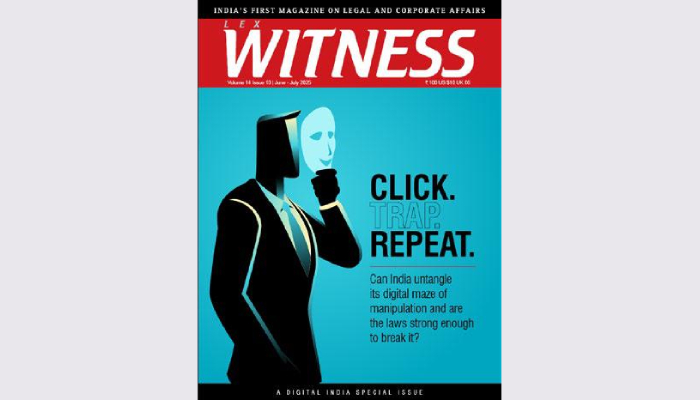
or

University Law Clinics as a tool for sensitising the young students towards the needs of the poor and as an engine of meeting the legal services’ needs of the under-privileged has been vigorously canvassed at least since the 1960s. It has been assumed that the law students would be ever so willing to gather some practical training before she/he jumps into the profession that the availability of student time will not be difficult. Yet, after two commissions on legal aid, Centre for Implementation of Legal Aid Schemes (better known as CILAS); the National Legal Services Authorities Act and an elaborate organisational infrastructure in various Legal Services Authorities, the suggestion for making legal aid work compulsory for fresh law graduates keeps circulating in professional and policy circles. Such suggestions are being made in many developing countries, including South Africa and Philippines. Similar sounds in India raises the question, whether the time is now ripe for this sort of an emergency action in India. Have the so called market forces been able to spring up a model where the deserving get the legal services, the young professionals get the desired capability/confidence to plunge into an independent professional life, and the government gets to redeem its pledge of securing justice to all (at the minimum possible cost to the exchequer) as well aspotentially prepare an army of professionals who will eventually take up free legal aid work in course of their profession?
The suggestions for making services to the public cause of legal aid and pro-poor legal service is like compulsory military service for the citizens in some countries. Any government resorts to these measures only when it runs short of volunteers at the time of crisis or is preparing for such an impending crisis. So, what has happened to the legal aid movement? The government is surely facing a shortage of volunteers, but are we in a crisis as well (or soon going to bein one)? While this question can lead us to a long and winding debate, not entered into here, what is amazing is that a section of the policy advisors to the government do not appreciate that compulsory service has failed the legal aid movement in the past and, therefore, is unlikely to be the correct answer.
“The Bar Council of India, through mandatory practical training papers in the LLB syllabus, has tried introducing— with lesser degree of compulsion— public cause lawyering by students. This could have been an opportunity for law schools to introduce campus based legal services centres. However, what one observes is that the “practical training” is largely classroom based.”
The Bar Council of India, through mandatory practical training papers in the LLB syllabus, has tried introducing— with lesser degree of compulsion— public cause lawyering by students. This could have been an opportunity for law schools to introduce campus based legal services centres. However, what one observes is that the “practical training” is largely classroom based. This is usually attributed to the resource intensive nature of clinical education. But this is only a part of the story, as there is a huge demand from students to gather practical exposure evidenced in the students’ scramble for internships in commercial law firms/chambers. Thus, the problem has also been in translating the motivations of the modern law student and his anxiety for a desired career into an actionable model for university law clinic based legal aid delivery. This failure of the quasi-compulsory public lawyering regime naturally ought to have triggered a debate on the usefulness of compulsory public service. Instead,rather unfortunately, it has led to suggestions for a further step in the coercive spectrum that young lawyers be forced to perform public service on the verge of launching their careers. Is this “service before self” measure likely to work?
These measures will not work. Brute force should not be seen as the ultimate answer to all questions. Not the least in a democratic society. There are alternative policy tools available which can deliver the outcomes that the government desires. The task of regulation is to motivate people, with the right policy incentives, to voluntarily march in particular direction. Resorting to proscription type measure would imply that the government has finally acknowledged its failure to avert a crisis and in its task of governance and policy induced progress, which is not the case. However, a paradigm shift in planning legal aid through university law clinics is definitely needed. If one looks at the American case of university based legal aid initiatives, one finds that the legal aid and practical training have been decisively dis-associated. This disassociation corresponds to the drying up of funding for clinical legal education initiatives (similar to the practical training initiatives) and the universities being left on their own to fund the clinical legal education programmes. The lesson that this has for India is that the students’ goal of education—which in any case is the prime focus of practical training—will be the dominant driver of legal education. It is this value that the government will need to examine and propagate to create a successful and synergic campus based legal aid programmes. A very useful suggestion that was made by Justice DalveerBhandari (in Legal Aid and Clinical Education: A Challenge and An Opportunity) way back in the 1970s has yet not been incorporated in the policy framework of university based legal aid clinics. He opined: “training and experience with the legal problems of the non-poor is most essential… [and by] establishing legal services programme for the non-poor and accepting a fee for their services… law schools could provide their students with a comprehensive clinical education and fund legal aid clinics for the indigent”. This, he said, would expose students to the types of non-poor legal work that the student is more likely to engage with in his professional career for earning his livelihood and at the same time spare some funds for subsidising the poor persons’ legal needs.
Sometimes, swayed by the rhetoric of justice education goals of the university law clinic, people treat proposals for fee-earning university law clinics as illegitimate. While, there are other meritorious arguments for having a market based and competitive legal aid delivery mechanism as in the UK, here we will limit ourselves to suggesting that such objectors do not spot the contradiction in their argument. Those who vouch for justice education through university law clinics assume that due to the sensitisation in the pro-poor legal work the future professional will be willing to subsidise from his earning from non-poor legal practice his time and effort needed for legal aid. Why, would it then be not legitimate for university law clinics to blend legal aid with non-legal aid work? The way forward could lie in the suggestions by Justice Dalveer Bhandari, and to put those ideas into a concrete business model and examine whether a campus based law clinic will be able to leverage its student time into an ability to earn enough revenue to subsidise the legal services for the poor. Even while this is done, a large number of legal consultancy contracts of governments could provide some support to the initiative. This leads us to study the demand, supply and profitability of the legal professionals in India. These could be the new research agenda for the clinics and university law clinics can serve as useful laboratories for such socio-legal research.
In the contemporary context of self-sustained higher education, the potential of university law clinics to deliver legal services to the poor and justice education to the young lawyer can only be harnessed if the policy framework can create a win-win situation for all stakeholders. This requires a re-examination of the basic assumptions of the university based legal aid movement of the era where education was state subsidised and career options for law students were mostly limited to joining the bar. In today’s context, budding lawyers will hunt for knowledge base, exposure and skills sets that will propel them on the most lucrative of the career options before them and university based legal aid initiatives will only sustain and flourish if they meet these requirements of the law student and the basic expenditure of the legal services professionals is met. It seems unlikely that a quality legal service delivery mechanism for those in need of access to justice can be built on the edifice of the philanthropic students and professionals.
Dr. Maurya Vijay Chandra is a practicing Advocate at the Supreme Court. Maurya holds a Masters from the London School of Economics and PhD from the University of London. He has also taught at University of London; NUJS (Kolkata); and UGC Academic Staff College (Ranchi).

Gunjan Bhatter

Lex Witness Bureau

Lex Witness Bureau

For over 10 years, since its inception in 2009 as a monthly, Lex Witness has become India’s most credible platform for the legal luminaries to opine, comment and share their views. more...
Connect Us:


The Grand Masters - A Corporate Counsel Legal Best Practices Summit Series
www.grandmasters.in | 8 Years & Counting
The Real Estate & Construction Legal Summit
www.rcls.in | 8 Years & Counting
The Information Technology Legal Summit
www.itlegalsummit.com | 8 Years & Counting
The Banking & Finance Legal Summit
www.bfls.in | 8 Years & Counting
The Media, Advertising and Entertainment Legal Summit
www.maels.in | 8 Years & Counting
The Pharma Legal & Compliance Summit
www.plcs.co.in | 8 Years & Counting
We at Lex Witness strategically assist firms in reaching out to the relevant audience sets through various knowledge sharing initiatives. Here are some more info decks for you to know us better.
Copyright © 2020 Lex Witness - India's 1st Magazine on Legal & Corporate Affairs Rights of Admission Reserved